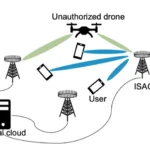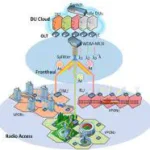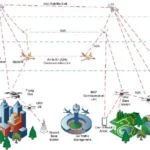Non-Terrestrial Network (NTN)
Introduction
The Non-Terrestrial Network (NTN) research area focuses on the development and integration of communication networks that operate beyond traditional terrestrial boundaries. NTN encompasses various technologies such as satellite communication, High Altitude Platforms (HAPs), and Unmanned Aerial Vehicles (UAVs). The primary goal is to extend connectivity to remote and hard-to-reach areas, improve coverage, and support emerging applications such as Internet of Things (IoT), disaster response, and global communication. NTN research aims to enhance network performance, reliability, and efficiency in non-terrestrial environments, paving the way for a more connected and accessible world.
Objectives
The primary objective of Green Mobile Networks research is to develop smart and autonomous base stations that dynamically adapt to environmental conditions. These base stations utilize advanced machine learning algorithms to optimize various parameters, including MIMO configurations, antenna settings, spectrum utilization, and energy-saving features activation, thereby enhancing energy efficiency and network performance.
Sub Areas
1. 6G for Connected Sky:
- Integration of LEO Satellites: Incorporating low Earth orbit (LEO) satellites into the network architecture to provide seamless connectivity for both ground and aerial users, leveraging their ability to offer low latency and high-speed data transmission.
- Optimization for HAPs: Developing communication protocols and technologies tailored for high altitude platforms (HAPs) to ensure reliable and stable connectivity, enabling their integration into the network ecosystem for enhanced coverage and capacity.
- Adaptation for UAVs and Flying Taxis: Designing communication systems capable of supporting the unique requirements of unmanned aerial vehicles (UAVs) and flying taxis, such as high mobility, varying altitudes, and dynamic flight paths, to facilitate safe and efficient operation in the sky.
Key Focus Areas
- mmWave Communication: Utilizing millimeter-wave (mmWave) communication technologies to deliver high-speed data connectivity inside aircraft, enhancing the in-flight experience for passengers.
Additional Information
In addition to the outlined sub-areas, the NTN research area is aimed at:
- Enabling reliable and robust connectivity for both aerial and ground users through a flexible and adaptive network architecture adopting multiple technologies such as satellite, direct air to ground communication (DA2GC), and high-altitude platforms (HAPs).
- Developing novel wireless network design and management schemes tailored for different types of flying vehicles, addressing their unique requirements in three-dimensional (3D) spaces.
- Providing robust, low-latency, and/or high-capacity communications to ground users in rural areas without any existing infrastructure through the deployment of non-terrestrial networks (NTNs).
Conclusion





